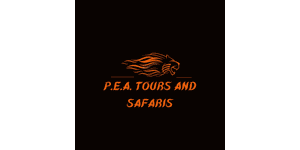
Safari Tours to Bwabwata NP
-
![15-Day Uncharted Namibia]()
15-Day Uncharted Namibia
$10,190 pp (USD)
Scheduled Start DatesNamibia: Shared tour (max 6 people per vehicle)Camping & Lodge
You Visit: Windhoek (Start), Nkasa Rupara NP (Zambezi Region), Bwabwata NP (Zambezi Region), Khaudum NP, Otjiwarongo (City), Windhoek (End)

Pictus Safaris
4.3/5 – 6 Reviews
-
![14-Day Namibia, Chobe, and Victoria Falls Safari]()
14-Day Namibia, Chobe, and Victoria Falls Safari
$5,541 to $5,657 pp (USD)
Botswana, Namibia & Zimbabwe: Private tourLodge & Hotel
You Visit: Windhoek (Start), Sossusvlei (Sand Dunes), Swakopmund (City), Twyfelfontein (Rock Art), Western Etosha, Eastern Etosha, Mahango GR (Bwabwata NP), Bwabwata NP (Zambezi Region), Chobe River, Chobe NP, Victoria Falls, Victoria Falls Airport (End)

Nature Travel Namibia
5.0/5 – 155 Reviews
-
![12-Day Ultimate Namibian Northeast Adventure]()
12-Day Ultimate Namibian Northeast Adventure
$8,536 to $9,394 pp (USD)
Botswana, Namibia & Zimbabwe: Shared tour (max 20 people per vehicle)Camping & Lodge
You Visit: Windhoek (Start), Waterberg Plateau, Khaudum NP, Mahango GR (Bwabwata NP), Bwabwata NP (Zambezi Region), Nkasa Rupara NP (Zambezi Region), Chobe NP, Victoria Falls (End)

PEA Tours and Safaris
5.0/5 – 7 Reviews

 Namibia Parks
Namibia Parks






_774_5c10b301bc706.gif)

